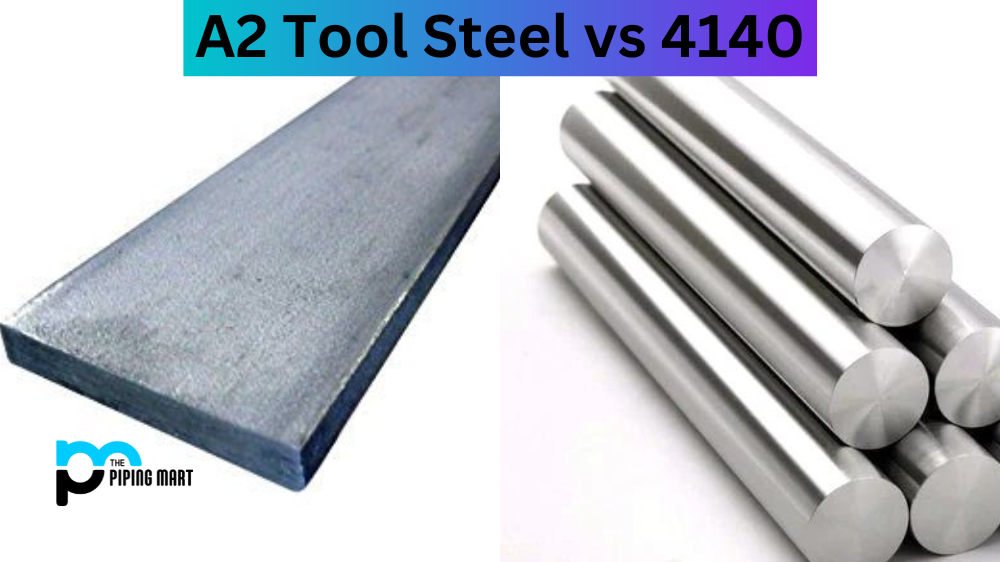Knowing which steel to use can make all the difference in the end product regarding metalworking. Two common types of steel used in making tools and machinery are A2 tool steel and 4140 steel. Both are popular options for their strength, durability, and affordability. But when choosing between the two, which one should you go for? In this blog, we’ll look closer at A2 tool steel vs 4140 steel and help you decide which is better for your project.
What is A2 Tool Steel?
A2 tool steel is an air-hardening, medium-alloy, cold-work steel that has become popular recently. It is known for its excellent wear resistance, toughness, and dimensional stability. A2 tool steel contains chromium, molybdenum, and vanadium, which give it exceptional hardness and wear resistance. This makes it ideal for creating shear blades, punches and dies. It also has the added advantage of being able to withstand high temperatures and be used in hot-forging applications.
What is 4140 Steel?
4140 steel is a chromium-molybdenum alloy often used for high-stress applications such as gears, spindles, and shafts. It is also an excellent choice for metalworking because of its high strength, toughness, and wear resistance. 4140 steel has great hardenability and can be tempered to high strength levels while maintaining its toughness. This makes it suitable for use in creating gears, tools, and machinery parts that require high strength and durability.
Difference Between A2 Tool Steel and 4140
Weldability
When it comes to welding, A2 tool steel is known to be difficult due to its high chromium content. It is also prone to cracking if not preheated properly. On the other hand, 4140 steel is relatively easy to weld, and with good preheating, it is possible to avoid cracking during the welding process.
Machinability
Both A2 tool and 4140 steel can be machined, but 4140 is slightly easier to machine due to its lower carbon content. Machining A2 tool steel requires harder cutting tools, slower speeds, and higher pressure. However, A2 tool steel has better dimensional stability, which means that parts made from A2 will have fewer size variations than those made from 4140 steel.
Other Differences
- A2 tool is high-carbon steel often used to make cutting tools and other wear-resistant parts.
- 4140 is a low alloy steel often used for making structural parts such as gears and shafts.
- A2 tool steel has higher carbon content than 4140, which gives it better hardness and wear resistance.
- 4140 has better weldability than A2 tool steel, making it more suitable for fabricating parts subject to welding.
- Both A2 tool steel and 4140 can be heat treated to improve their properties.
Conclusion
In conclusion, both A2 tool steel and 4140 steel have advantages and disadvantages regarding metalworking. A2 tool steel is known for its excellent wear resistance, toughness, and dimensional stability. It is suitable for creating tools, dies, and high-temperature applications. However, welders may find it challenging to work with. Conversely, 4140 steel has great hardenability and can be tempered to high strength levels while maintaining its toughness. It is also relatively easy to machine and weld, but it lacks the dimensional stability of A2 tool steel. Ultimately, the choice between A2 tool steel and 4140 steel comes down to your project’s specific properties and needs. Be sure to carefully examine the advantages and drawbacks of each steel type before making your final decision.

Hey, I’m Krutik, a casual blogger expert in the metal industry. I am passionate about providing valuable information to my readers. With a background in engineering and construction, I like playing Cricket & watching Netflix shows in my free time. Thank you for visiting my blog, and I hope you find my information helpful!




